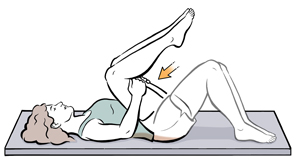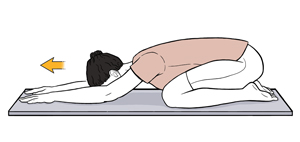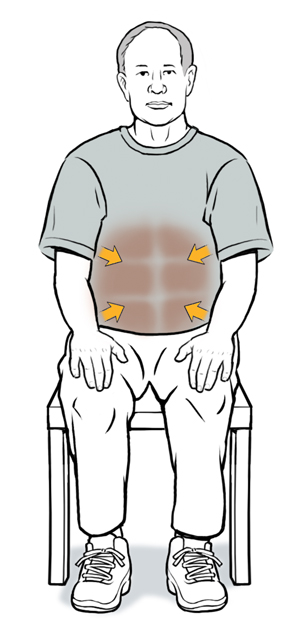Exercise Program for Spondylolysis and Spondylolisthesis
Your healthcare provider may recommend exercises to help treat your spondylolysis or spondylolisthesis.
Talk to your healthcare provider or physical therapist about which exercises are best for you and your rehabilitation goals.
Start each exercise slowly. A little discomfort is normal but stop any exercise that causes pain.
Double Knee to Chest
-
Lie on your back with your knees bent.
-
Hug both knees to your chest. Keep your lower back on the floor.
-
Hold for 15 to 30 seconds, then relax.
-
Repeat 3 times.

Child's Pose
-
Kneel on the floor and sit back on your heels.
-
Lean forward and stretch your arms out in front of you with your palms down. Try to keep your buttocks against your heels as much as possible.
-
Relax your neck and let your forehead gently rest against the floor. Reach as far in front of you as possible.
-
Hold for 15 to 30 seconds, then relax.
-
Repeat 3 times.

Seated Abdominal Bracing
-
Sit upright in a chair with your feet flat on the floor.
-
Tighten your belly muscles by pulling your belly button towards your spine. Hold for 5 seconds. Continue to breathe normally as you hold. Then relax.
-
Repeat 10 times.
Tip:
-
Try counting out loud to help avoid holding your breath.

Curl Up
-
Lie on your back with your knees bent and feet flat on the floor. Don’t press your neck or lower back to the floor. Cross your arms loosely over your chest. You may place a pillow under your head for comfort if desired.
-
Tighten your belly muscles and raise your shoulder blades off the floor. Keep your head in line with your shoulders. Do not tuck your chin to your chest.
-
Hold for 2 seconds, then lower yourself back down.
-
Repeat 10 times.
Tip:
-
Breathe normally during the exercise; do not hold your breath.
